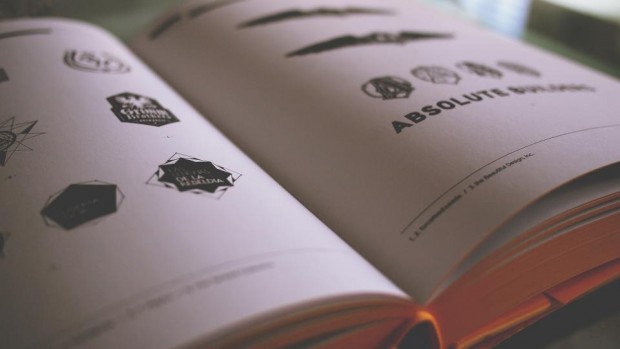Branding is a fairly misunderstood concept, especially for freelancers.
Some oversimplify it, and use it interchangeably with the idea of logo design. Others blow it way out of proportion, and think it only has a place with the big boys in your industry.
In truth, branding encompasses nearly every aspect of a company’s personality, including its logo, how it speaks to its customers, and how it is perceived by the public. Branding is not just for the power players. It’s for every business of any size, including freelancers that want to grow their income and create a powerful reputation for themselves.
The Importance of Personal Branding for Freelancers
Good branding makes any business memorable. Talented freelancers can benefit from being remembered, more than most. There are many skilled designers, photographers and writers who call themselves freelancers these days, so you will need to brand yourself in a unique way, in order to stand out from the pack.
Whether you’re just getting started on the road to building a freelance career, or you’re a seasoned pro, here are some actionable steps to taking the guesswork out of what makes a memorable personal brand, and how you can start putting them into practice today.
Your Personality is Your Brand
The first step in the process is defining the unique personality of your brand.
This goes for all businesses, but when you’re a freelancer, guess who’s personality you get to use? That’s right, it’s one of those rare occasions when your business can be unabashedly all about YOU. After all, you are the brand, so to present a false front to the world would be unnatural, and ultimately very difficult to keep going.
Here’s my quick process to defining the personality my brand’s going to adopt. On a piece of paper, write down three positive adjectives that:
• you think describe you.
• you want your clients to use to describe you.
Now it’s gut-check time.
Just because you think these words describe you, doesn’t mean other people will agree. So, gather a few of your closest friends that you can trust to be completely honest with you. Ask them to do the same activity, giving you three descriptive adjectives based on the personal brand they feel describes your freelance business.
After that, show them your words, compare, and see if they agree. If they also used similar words to describe your freelance personal brand, then you’re already on the right track. If not, it’s time to take a hard look at the forward-facing image you’re currently giving off, and get feedback on how you can better align yourself with your three adjectives.
These three words will be instrumental in determining all of your personal branding efforts, so it’s important to get them right.
Your Name vs. Company Name
The next big decision you need to make is your business name.

Many freelancers decide just to use their own name with their discipline after it, such as “Kyle Walker Photography.” Others find it more advantageous to use a separate company name. With a longer term focus, there are several reasons to go the route of branding yourself under a company name:
1. If you have a common name.
2. If you envision yourself expanding the business into a team.
Having a commonly used name can come with certain drawbacks. Can you get the domain name you want for your website? What about social media profiles? If people search for you on Google, are you anywhere near the top of search results? If not, you may want to go with a “doing-business-as” (DBA) name.
Similarly, if you see yourself growing into a larger company with staff over time, you might not want to go with your own name either. In my case, I knew I didn’t want to be a one-man-band forever, so I ditched “Wes McDowell Creative” in favor of the more growth-friendly “The Deep End.”
If you see yourself growing in the future, it makes way more sense to start your brand sooner, rather than later. Otherwise, once you make the leap, you’ll be starting all over.
If you decide to go with a DBA, keep your three words in mind, and pick something that reflects them.
The Writing Funnel
A big part of becoming a highly paid freelancer is having an impressive web presence that can sell your services round the clock. And because many of your prospects will be seeing you online long before they ever get a chance to meet you in person, the words you choose will have a big impact on whether you get hired or not.
When you consider what has to go into your website, as well as your social media channels, it can seem like a lot of writing. But, if you write in the right order, you can cut your workload down significantly, while maintaining a consistent personal brand.
Think of it like a funnel. Write the biggest chunks first, and distill it down into smaller versions for other purposes. Here’s my personal process:
1. Start with your full bio. This is what will go on your website. Start with your three adjectives that describe your personal brand, and tell a compelling story. Who are you, and what do you do for your clients that will make their lives easier, or better?
2. Condense it down to a few hundred words or less for your Facebook and LinkedIn pages. Keep the tone consistent, but really focus here on what your clients get from you.
3. Shave it down to 140 characters or less for Twitter, and for your most basic elevator pitch. Remember, lead with your most essential core benefits from a client perspective.
4. Narrow it down even further to just a few words for your tagline. This should still strike the right brand message, while being super-succinct. No more than a few-word sentence.
Keep all of these descriptive personal brand statements in a single document, in a folder on your desktop. In the beginning, you’ll want to refer back to these descriptions often as a source of inspiration for writing style and general guidelines as you expand outward and publish content around the web.
Your Logo

Now comes the fun part.
Most people get the idea of branding confused with logo design, but as you can tell by now, creating your logo is only one step in the process.
At the expense of sounding like a broken record, you will need to start with your three adjectives. Your logo should be a visual interpretation of your personality, so it’s very important at this stage. You want your prospective clients to be able to get a sense of your personal brand’s core values by taking one look at your logo.
If your branding is playful and quirky, you would have a very different logo than if it were upscale and sophisticated.
Keep in mind that there’s no single right answer when it comes to choosing how to brand yourself. As long as your brand resonates well with your target customers, you’re on the right track.
Maybe you’re a freelance designer who can design your own logo, but if you aren’t that’s fine. You can hire one, or even work out a trade with a logo designer, provided you can give them something they need.
In the worst case, you can always come up with a purely type-based logo on your own. Many businesses opt for no logo image, and the right typeface can strike a chord all on it’s own when done right.
Own Your Brand
The final step in your freelance personal brand is an ongoing one. Starting today, you have to be your brand. Since your branding is based on what makes you unique, this should never be a problem.
At the end of the day, you are the one who is in charge of your brand, so protect it. Embody it with every single client interaction, and keep it consistent.
Final Thoughts
As any creative freelancer knows, working on your own projects can be the most grueling. But with the steps we’ve covered here, you should be able to assess your own unique situation, and apply these branding principles to make your freelance business memorable within your industry.
Have you gone through a personal branding activity yourself?
Do you have any other advice or stories from the process you’d like to share? Leave them in the comments below so others can benefit from your experience!



